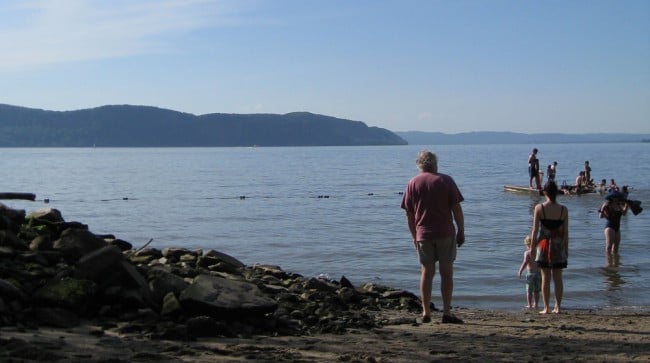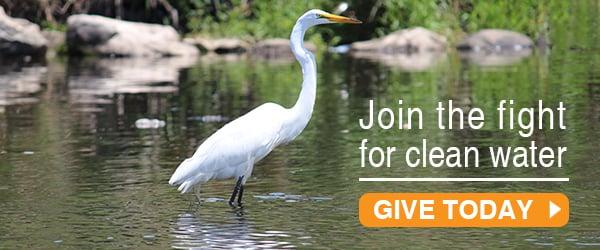- Stop Polluters
- Pollution Enforcement Actions
- American Sugar Refining Penalty
- Beacon: Sewage Pollution
- Enforcement on PIPC NJ Boat Basin Dredging
- Enforcement Success at Millen’s Scrap Yard
- Houghtaling Island
- Irvington Truck Washing
- Lehigh Cement
- Newtown Creek: Allocco Recycling
- Newtown Creek: Empire Transit Mix
- Nycon Supply Corp
- Waterfront Dumping in NYC
- Sewage Contamination
- Beyond Indian Point
- Power Plant Cases
- Contaminated Sites
- Hudson River PCBs
- Greenpoint Oil Spill on Newtown Creek
- Gowanus Canal
- Pollution Enforcement Actions
- Protect River Ecology
- Invasive Species
- Saving the River’s Fish
- Trash Free Hudson
- Champlain Hudson Power Express
- Storm Surge Barriers
- Crude Oil Transport
- Hudson River Anchorages
- Waterfront Development Watch
- Army Corps Channel Dredging, Athens
- Ballpark on Chicken Island, Yonkers
- General Motors Site Redevelopment, Sleepy Hollow
- Greenpoint/Williamsburg Rezoning Project
- Haverstraw Waterfront Development
- Hudson’s Landing (Stuyvesant)
- Kingston Landing
- Landfilling the Hudson North of Battery Park City
- Millennium Pipeline
- Newburgh Proposed Waterfront Redevelopment
- Proposed Rezoning of the East River Waterfront
- Redevelopment Project, Yonkers
- Rensselaear Riverfront Development
- Ridgewood Reservoir in Highland Park, Queens
- St. Lawrence Cement in Hudson
- Tappan Zee Bridge
- United Water New York’s Proposed Desalination Plant
- Waters Edge, Dobbs Ferry
- Proposed Mall in Newburgh
- Clean Boating
- Public Access
- Safeguard Drinking Water
- Drink Tap Water
- Restore & Protect NYC Waterways
- Climate Impacts
- Support Policy Solutions
Sewage Contamination

Photo: Tracy Brown / Riverkeeper
Each year millions of citizens spend time in or on the Hudson River and the waters surrounding New York City. Since the passage of the Clean Water Act, water quality has improved dramatically and over the past several decades, citizen activism has made it increasingly unacceptable for government and industry to treat our rivers as dumping grounds. Still, one of the major sources of pollution in the Hudson continues to be dumped in the river at alarming rates – sewage.
-
Our Water Quality Testing Program
Riverkeeper’s Water Quality Testing Program is the first program to regularly test Hudson River water quality from New York Harbor to Albany and to make the data publicly available within days. Water quality data from local, state and federal authorities can take months or years to be made public.
View our sampling dataRiverkeeper is grateful to our partners at the Lamont-Doherty Earth Observatory and Queens College for their support of this important program.
-
Current Testing Standards – Federal, State, County
Water quality testing on the Hudson River Estuary is minimal. Public notification of unacceptable water quality conditions is patchy in some communities and non-existent in most.
Water quality testing and public notification practices are the result of laws and regulations set on the federal, state, county and town level.
Learn More -
Riverkeeper RecommendationsImproving Water Quality
Riverkeeper’s Clean Water Action Agenda calls for:
1) Frequent monitoring and public notification
2) Passage of a New York State Sewage Right to Know Law
4) Wastewater infrastructure upgrades
5) Local actions to address local sources of sewage contamination -
Sewage Pollution Right to Know Law
The key to turning the tide of sewage contamination in the Hudson and elsewhere is public awareness.
In 2012 Riverkeeper lead the charge to pass the New York State Sewage Pollution Right to Know Law. This law requires public notification of discharges of raw or partially treated sewage from publicly owned treatment plants and delivery systems. It also requires public notification of Combined Sewer Overflows (CSOs).
-
Aging Infrastructure, Precipitation, Sewage and Hudson River Water Quality
The great strides in pollution control that have been established since passage of the Clean Water Act cannot be overlooked. Rivers that were once considered open sewers are now well protected and substantially less polluted. But many of the treatment facilities constructed in the 1970s or earlier have now reached their expected life span and the combined sewer overflows (CSOs) and sanitary sewer overflows (SSOs) they discharge continue to plague our waterways.
These overflows, generally triggered by wet weather events, send an unsafe amount of pathogens into our waterways. Pathogens – biological agents that cause illnesses and diseases – put the public at risk and greatly impede the Clean Water’s Act mandate of attaining fishable and swimmable waters.
Combined sewage overflows, sanitary system overflows, failing wastewater treatment plants, and cracks in pipelines and holding tanks send billions of gallons of untreated sewage and polluted stormwater into the Hudson River and New York Harbor each year.
Learn More

